Colombia is the mythical land of El Dorado, known to colonial European powers as the home of El Rey Dorado, the golden king of the Muisca people who covered his body with gold during his coronation and lived in a city paved with gold (see the story below).
It was the legends of this golden king that brought the Spanish conquistadors to Peru and Colombia in search of oro and left them perplexed for centuries when they were unable to find the legendary golden city. They did find oro, but it was in smaller quantities than expected and it didn’t satisfy their insatiable thirst.
To the Pre-Hispanic people, gold had little monetary value but it was the material of choice for artisans because it is malleable, easy to work with, and does not corrupt when exposed to different elements. Its bright yellow colour was likened to the power of the sun and it became the chosen metal used in creating ceremonial objects (over silver).
The Spanish’s never-ending gold lust drove the conquistadors to pillage of South America for these ceremonial artifacts, which they simply melted down into bricks and shipped back to Spain. Regardless, some spiritual works from this era still exist and are displayed in the Museo de Oro in Bogotá. The museum was created in 1939 by the Bank of the Republic in an attempt to protect archaeological findings in Colombia. All items found in the museum come from Pre-Hispanic societies.
The pillaging of Colombia for gold never really ended. Even today people still search for El Dorado, they exploit the land and people to mine the ore and drain the ceremonial lakes in search of historical objects used in ceremonies. Not enough is being done to protect the people, their land, and their history.
THE GILDED MAN
— From the Ancient History EncyclopediaAccording to the legend, then, amongst the Muisca, when it was necessary to crown a new monarch, the man who would be king prepared for his great day with a period of abstinence. Secluded in a cave, he was forbidden chilli peppers, salt and women. When the coronation day finally arrived the future king travelled to Lake Guatavita, a remote lake formed in an extinct volcanic crater, in order to give offerings to the gods so that they might bless his reign. This he did by going to the centre of the lake on a raft. The raft, made from reeds, was laden with treasures of gold and emeralds and on it were placed four large incense burners. The incense was moque and the braziers, joined by those set around the shores of the lake, gave off clouds of thick smoke which must only have added to the mystique of the ceremony.
The most fantastic treasure of all, though, was the royal person himself. He had been stripped naked and entirely covered in a sticky layer of resin on which was blown fine gold dust. The result was a sparkling man of gold; literally a ‘gilded man’. Also travelling on the raft were four attendants, less spectacularly attired but still weighed down with heavy gold jewellery on any part of the body it could be hung from. The great moment came when accompanied by mass trumpets and singing from the shores, the raft arrived in the very centre of the lake. At that moment silence fell on the crowd and the attendants threw the fabulous treasure of gold and jewels into the lake and the people on the shores also threw their golden offerings into the sacred waters. The climax of the ceremony came when the golden king himself leapt into the lake and when he emerged, cleaned of gold, he had become the king of the Muisca.
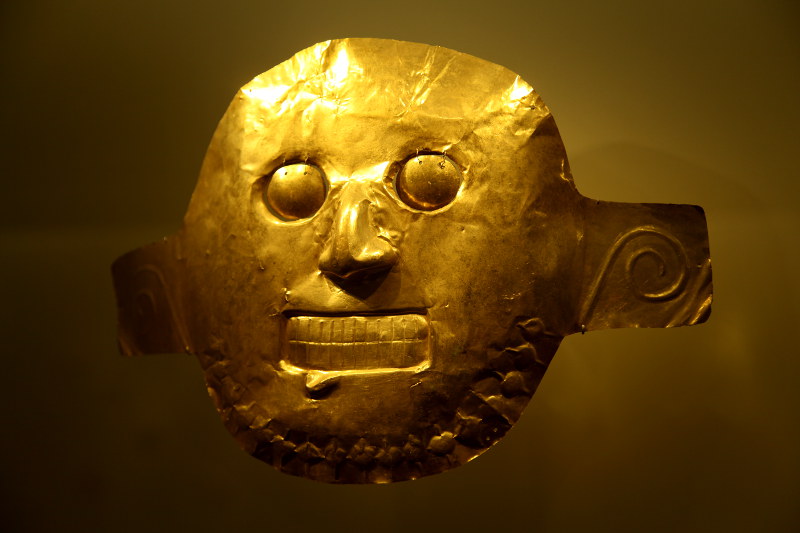
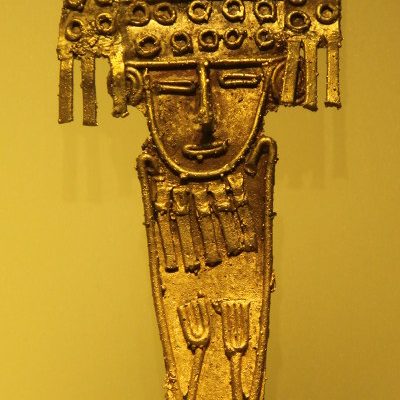
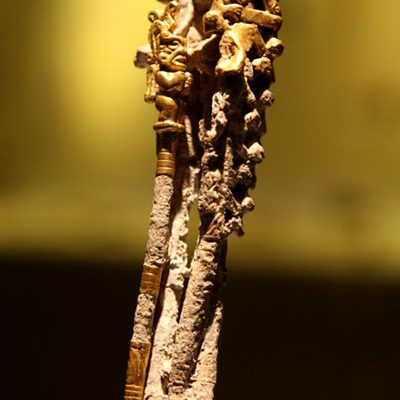
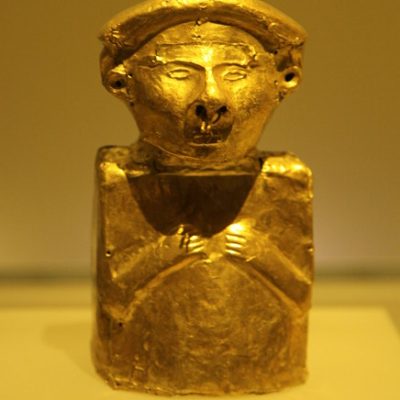
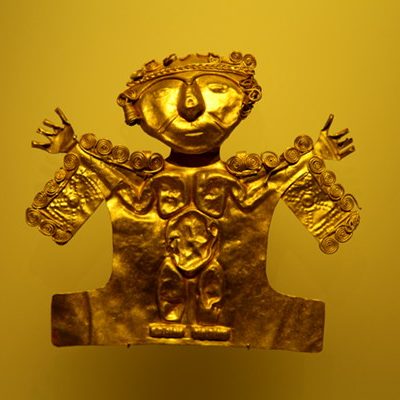
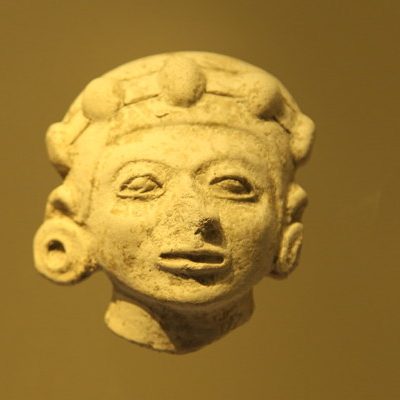
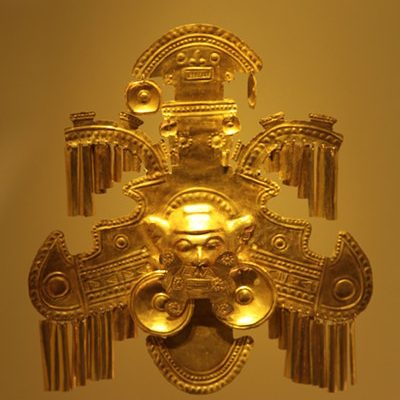
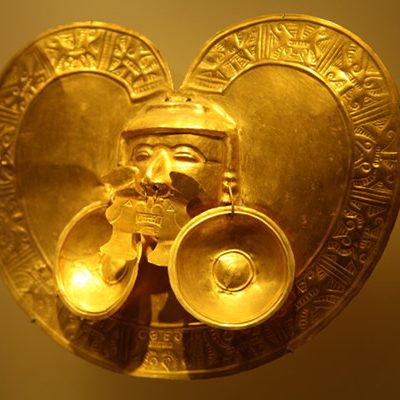
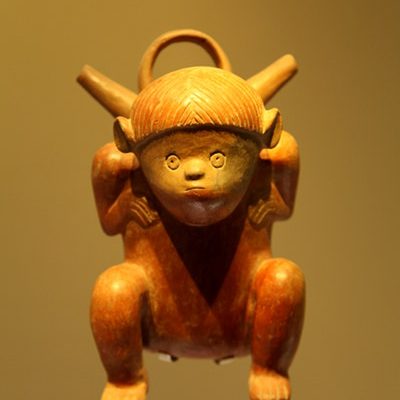
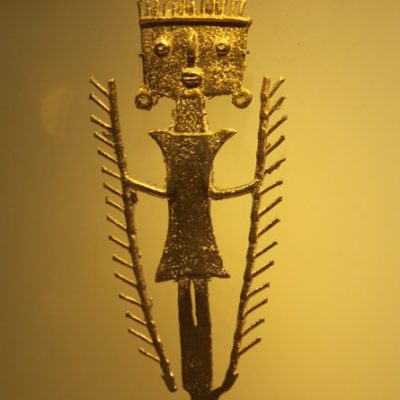
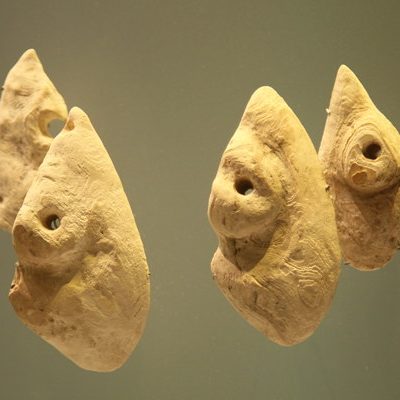
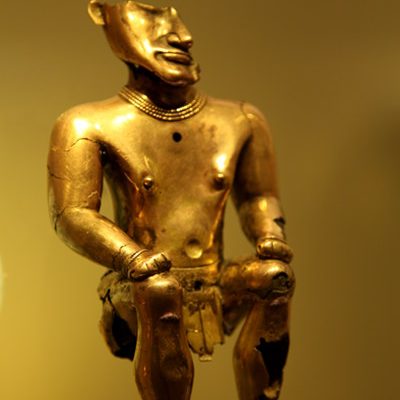
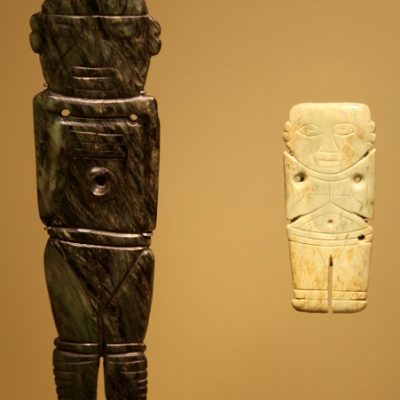
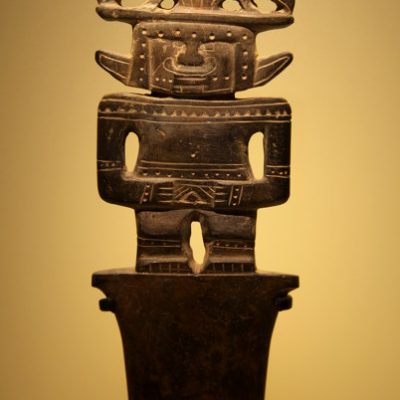
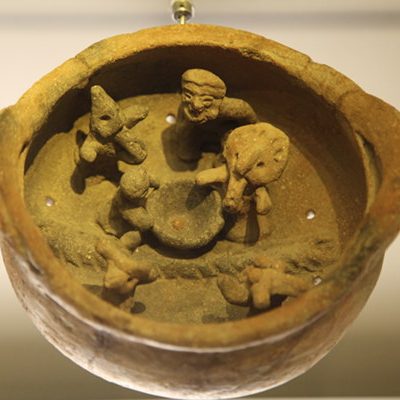
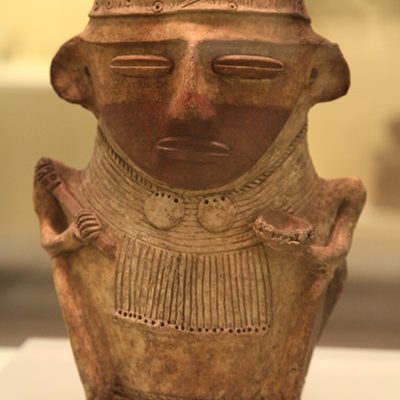
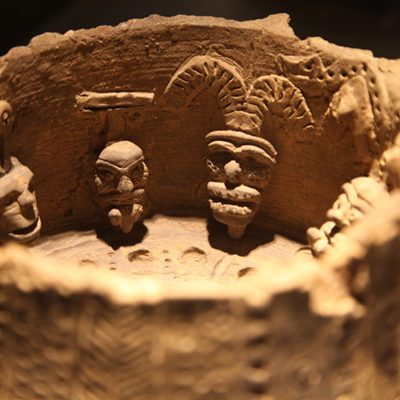
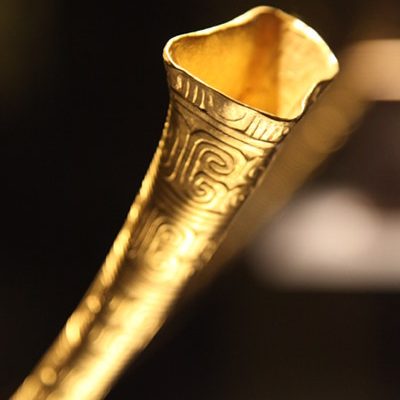
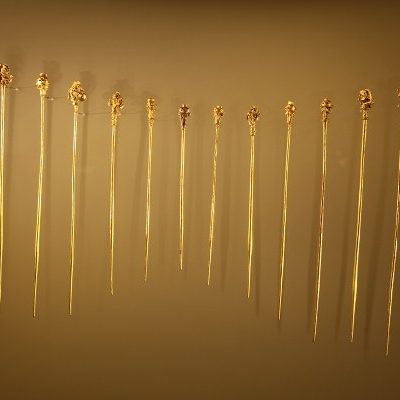
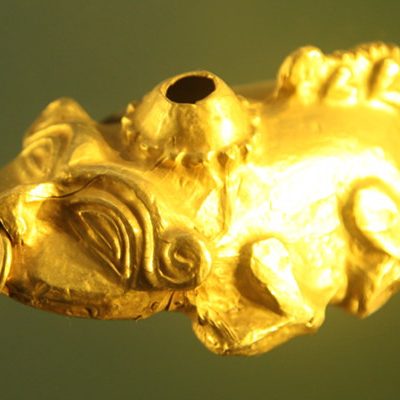
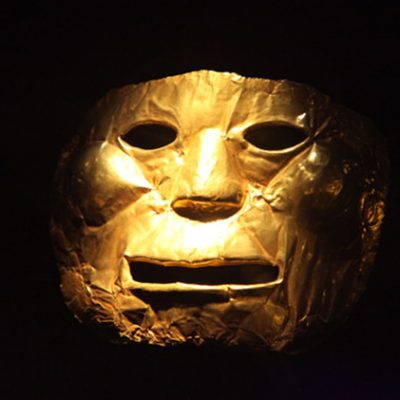
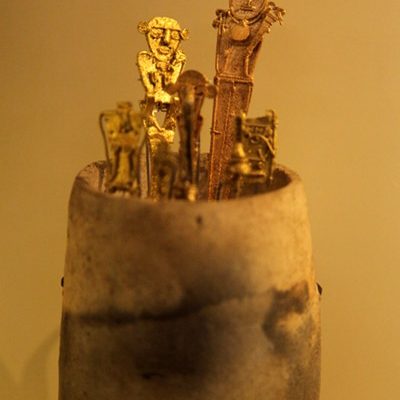
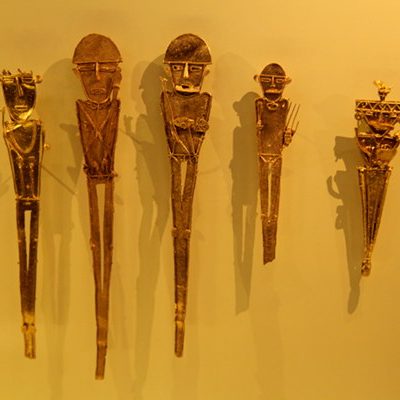
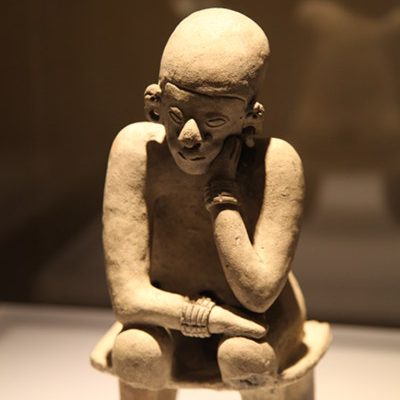
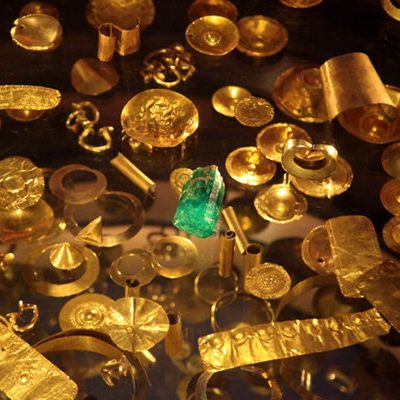
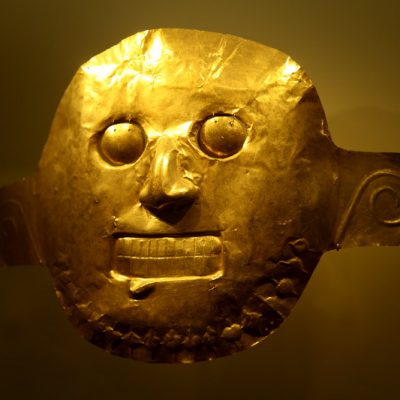
0 comments on “Museo de Oro, Bogota”Add yours →